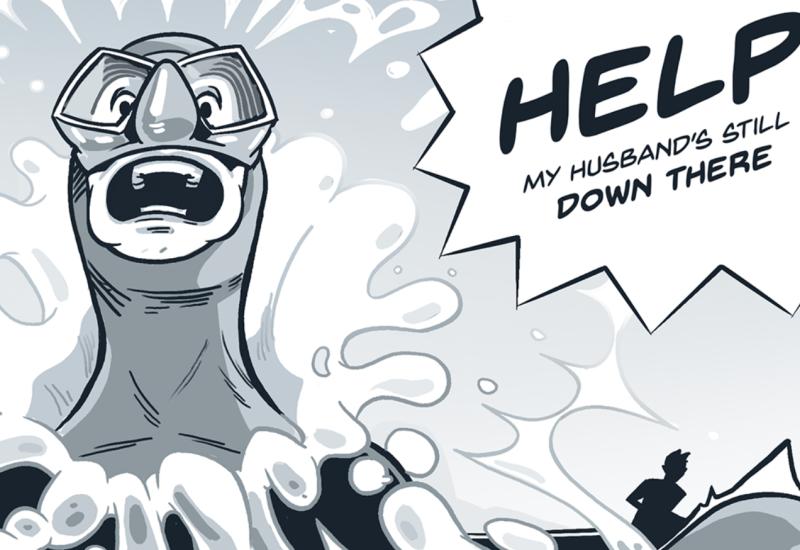How to Snorkel Safely | Lessons for Life

Steven P. HughesPhysical stress can start at the surface.
Karen was excited and nervous to snorkel on her cruise vacation. The other swimmers kicked ahead, but she was distracted by the beautiful colors below her—and the tight feeling in her chest.
The Snorkeler
At 61 years old, Karen was comfortable in the water but new to snorkeling. The only experience she had with the equipment was in the pool. She had no known medical conditions.
The Swim
Twenty-five passengers took a short boat ride to a shallow reef. After a safety briefing they entered the ocean with mask, fins, snorkel, inflatable vest and a 4-pound weight belt. It was a calm day, perfect for swimming on the surface.
The Accident
The details of what happened next are uncertain. After 15 minutes, the boat crew noticed Karen lagging behind the other swimmers. Then she stopped moving. The crew responded immediately but could not resuscitate her.
Analysis
There was no autopsy performed, but this was most likely a sudden cardiac arrest. Signs of heart issues in women can be more subtle than in men.
Karen assumed the risks of snorkeling by signing a medical release form confirming she was in good health, which she likely believed to be true. Snorkeling and scuba diving impose physical demands. Even with perfect conditions, swimming through water takes more effort than walking on land.
When you are underwater or floating on the surface, the blood volume in your extremities will shift to your core. This shift puts additional strain on your heart, causing it to work harder to handle the elevated blood pressure. This shift also causes “immersion diuresis,” during which the body detects this additional blood volume and eliminates excess fluid as urine. Immersion diuresis can dehydrate divers who aren’t careful to drink extra water while diving.
Another relevant factor in this case is that the snorkel increases the dead space between the lungs and the open air. You exhale CO2 with each breath, but a snorkel extends your airway by several inches. Some of the CO2 that doesn’t escape the snorkel is inhaled again. Divers may find it harder to breathe while swimming through surface chop because a snorkel increases breathing resistance.
Karen wore a vest to help her float on the surface, as well as a weight belt to help her submerge. This gear configuration increased her body’s surface area, increasing drag and requiring more effort to swim. Because water is 800 times denser than air, divers should trim weight appropriately to minimize their body’s profile in the water and expend less energy moving through it. Karen’s inexperience swimming with fins also likely increased her workload. Practicing and refining your fin technique can help you move more efficiently.
Karen had no past medical history that would indicate any problems snorkeling, nor would her age have disqualified her from the activity. However, a physical examination by her doctor might have caught Karen’s underlying health issues. As you age, it’s a good idea to stay fit for diving and discuss your health and dive fitness with your doctor annually.
Ultimately, the likely sudden cardiac arrest that killed Karen could have happened anywhere. But in the water, Karen faced the emotional stress of an unfamiliar activity and the physical stresses of labored swimming while breathing through a snorkel in unfamiliar equipment. The added physical stresses likely proved too much for her body.
The boat crew acted quickly to recover Karen from the water, but there was little they could do at that point. It is important to remember that medical care is often delayed in the time that it takes for the boat crew to realize there is a problem and get an unconscious diver back on board. In an emergency situation, every minute is crucial.
Lessons for Life
- Be truthful on your medical form. Consult a physician regularly about your health, preferably one who understands scuba diving.
- Be fit for diving. Diving can be a relaxing activity, but you should be fit enough to respond to an emergency should one arise.
- Practice your diving skills to make sure your fin-kick techniques and your body position in the water are streamlined. Take a class from an instructor on neutral buoyancy.










